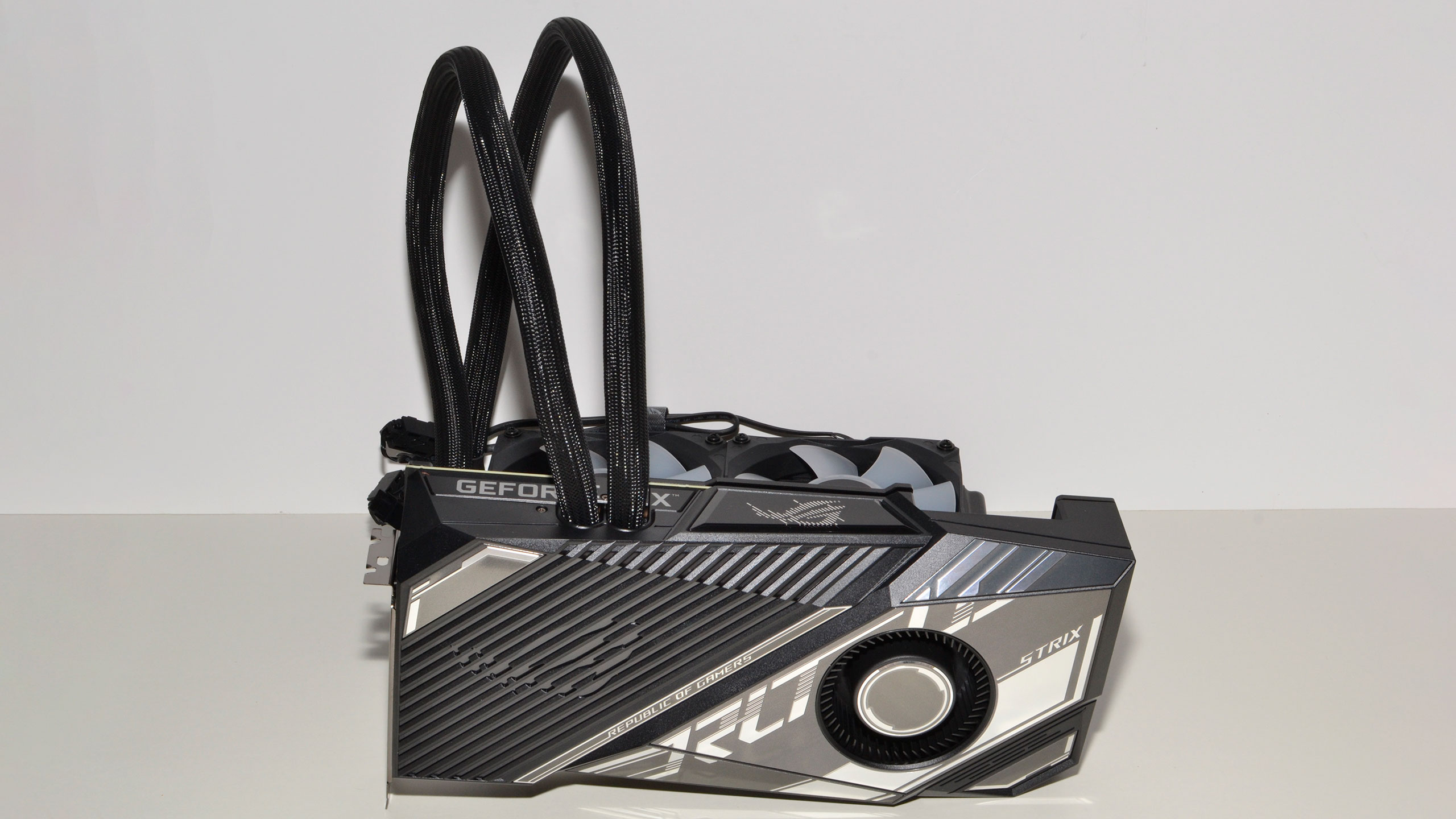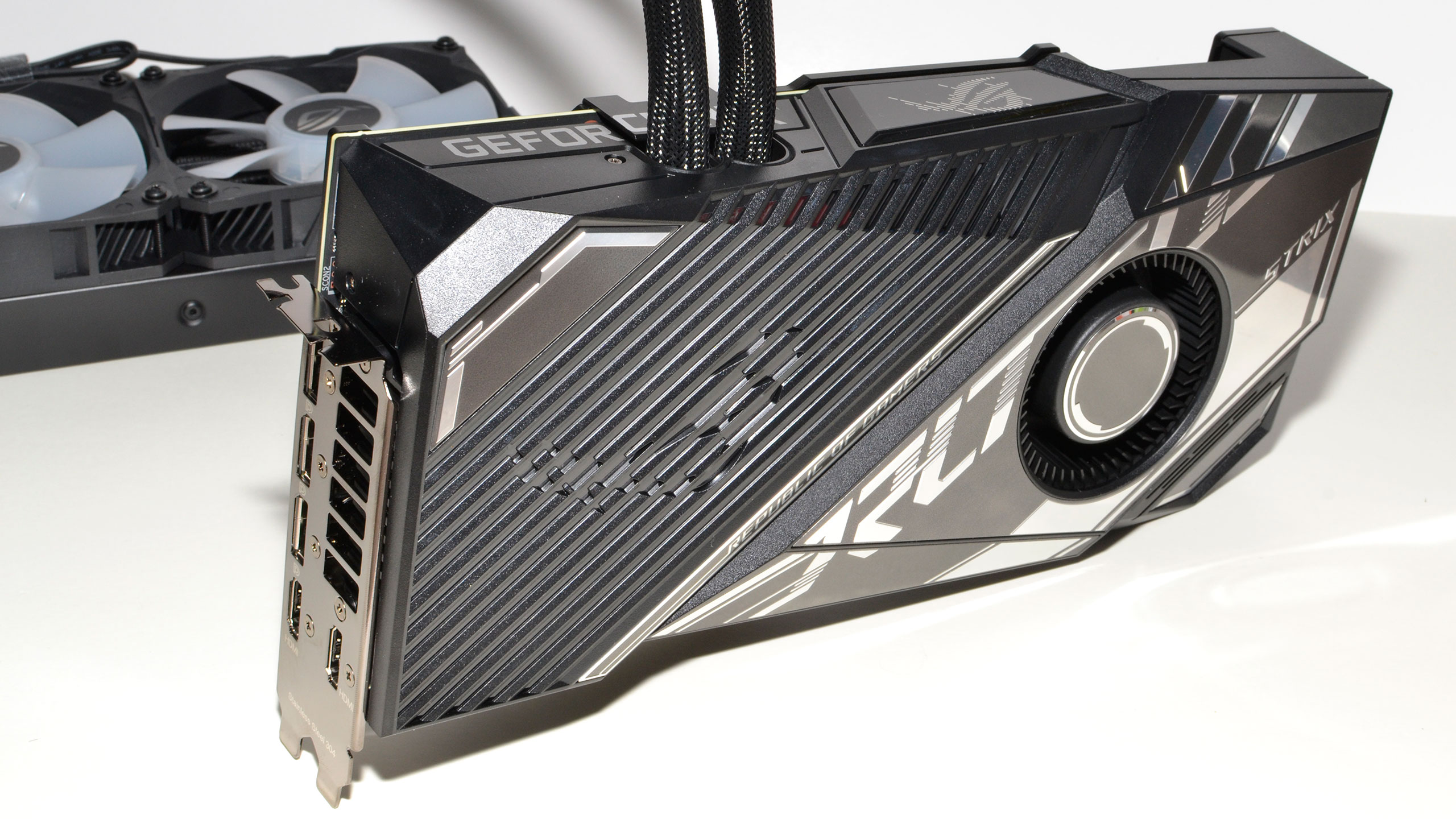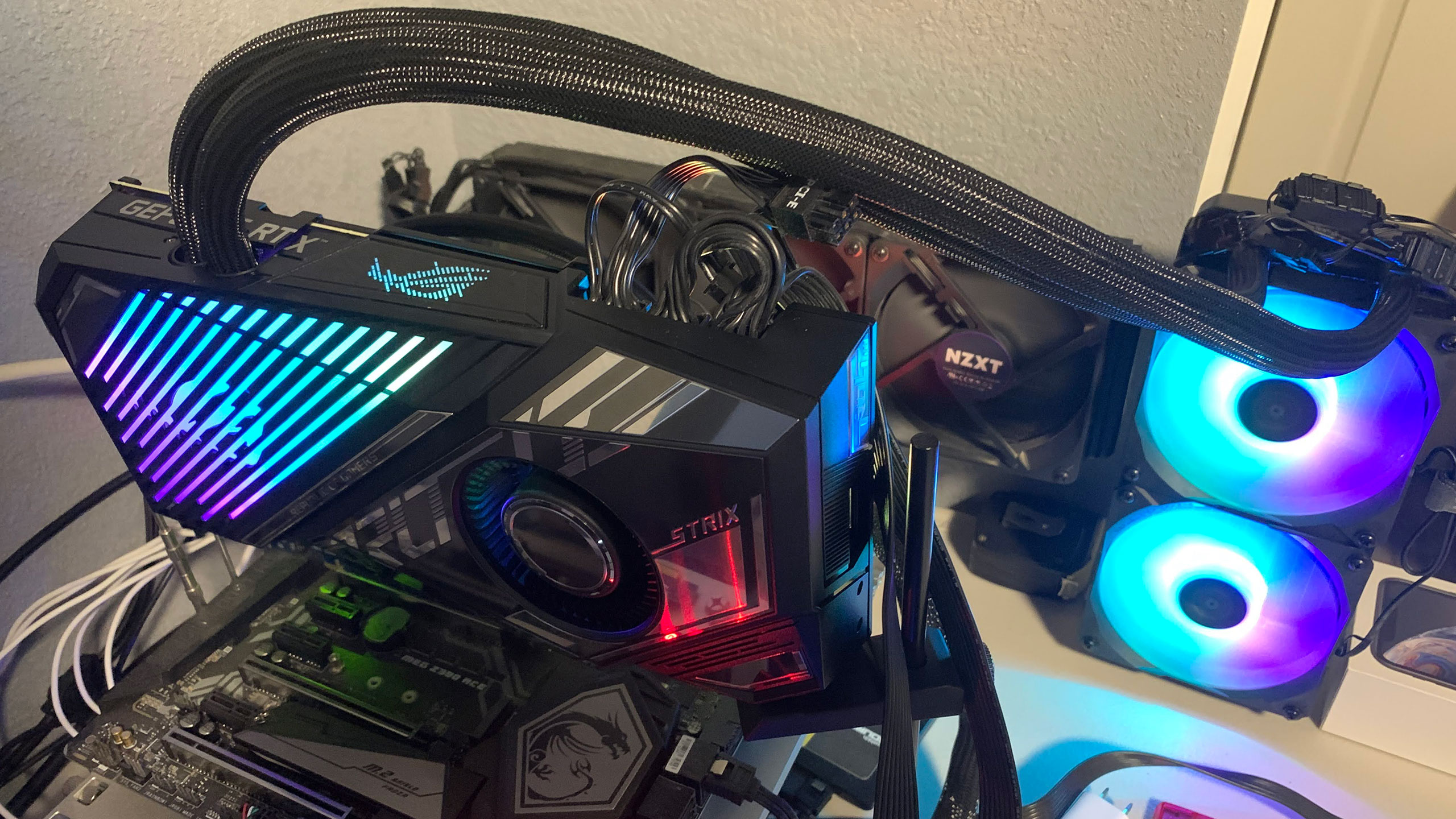Why you can trust Tom's Hardware
The Asus ROG Strix LC cards require a spacious case. Even with most of the cooling moved over to the 240mm radiator, the card remains beefy. It measures 295x133x51mm for the card itself, while the radiator measures 274x120x50mm (both are our measurements, give or take 1mm). The combined weight tips the scales at 2488g, but about half of that is in the radiator, so at least your PCIe x16 slot won't have to shoulder the load alone. Officially Asus calls this a 2.6-slot width, but it's basically a triple-slot card, plus a chunky radiator, all in pursuit of minimum temperatures and maximum performance.












As with other ROG Strix cards, there's a toggle on the card to switch between P-mode (performance) and Q-mode (quiet), but if you want maximum performance, you still need to install the Asus GPU Tweak III software. That provides access to the OC mode, which boosts the power limit by 10% and also increases the boost clock an additional 30MHz. That's what we've used for our performance testing, since we figure anyone forking over the money for this sort of card will want the maximum performance possible.
The only real omission here is in the memory department. The RTX 3080 Ti comes standard with 12GB GDDR6X, but at the current prices we still question the need for such a card. Why not give us more RTX 3090 models with double the VRAM? But that's its own answer. Double the memory would potentially limit the number of cards that can be produced, though it's not clear if the limiting factor right now is GPUs from Samsung Foundry, GDDR6X memory from Micron, or the substrate and other components needed to manufacture a complete graphics card. Still, it's a bit weird that Asus offers ROG Strix LC models on the RX 6800 XT and RX 6900 XT, but only the RTX 3080 Ti on the Nvidia side.
One nice benefit of all the extra cooling on the ROG Strix LC model is that GDDR6X temperatures remain relatively sane for a change. We've seen Founders Edition cards hit 102C or more playing games, and that goes for many other models as well. Run something like cryptocurrency mining and you'll often need fan speeds of 80% or more just to keep the memory below the maximum 110C! But the ROG Strix LC topped out at 98C on its memory, even after an hour of mining, and gaming workloads landed in the 90C range.
Not that we'd recommend buying an RTX 3080 Ti for mining purposes, as the potential profits are lower thanks to Nvidia's LHR limiter. You can now get about 70–75% of 'normal' non-LHR performance, but that still puts the RTX 3080 Ti at around 75MH/s for Ethereum in our testing. Mining of Ethereum will also go away in the coming months, once the cryptocoin shifts to proof of stake, though plenty of other memory-intensive coins still exist and might take Ethereum's place among GPU miners. Regardless, if you need some excitement, we can think of other better uses of your time and money.
You can also manually overclock the ROG Strix LC, and with a bit of tweaking and tuning you can get an extra 100MHz or so and bump the memory clocks to 20 or even 21 Gbps. For purposes of our graphics card reviews, however, we're focusing on the out-of-box experience (using the OC mode).
MORE: Best Graphics Cards
Get Tom's Hardware's best news and in-depth reviews, straight to your inbox.
MORE: GPU Benchmarks and Hierarchy
MORE: All Graphics Content
Current page: Meet the Asus ROG Strix LC GeForce RTX 3080 Ti
Prev Page Asus ROG Strix LC RTX 3080 Ti Specs Next Page Test Setup for Asus ROG Strix LC GeForce RTX 3080 Ti
Jarred Walton is a senior editor at Tom's Hardware focusing on everything GPU. He has been working as a tech journalist since 2004, writing for AnandTech, Maximum PC, and PC Gamer. From the first S3 Virge '3D decelerators' to today's GPUs, Jarred keeps up with all the latest graphics trends and is the one to ask about game performance.